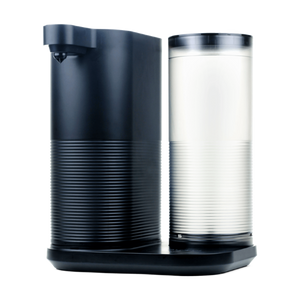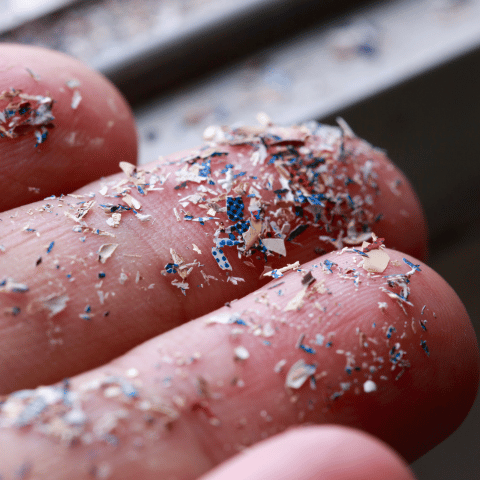What are the health impacts of microplastic exposure?
While research on the full extent of health impacts from microplastic exposure is still limited, initial research suggests there are potential risks. For instance, researchers have already found microplastics in human lung tissue, blood, and even breast milk, confirming that these pollutants are already in our bodies. Other studies show that microplastics can cause gut inflammation, reproductive issues, and even affect cognitive function in mice. Further still, microplastics can absorb and transport other harmful contaminants and known carcinogens, raising additional concerns.
How to know if microplastics are in your water
Currently, there are no home tests readily available to detect microplastics in water. However, if you’re concerned and want to get rid of microplastics in your water, you can send a sample to a laboratory for testing. Some states, such as California, have started testing for microplastics in drinking water, so check in with your local utility department to see if their water quality reports will include microplastics in the list of contaminants.
How to remove microplastics from water
To effectively remove microplastics from your drinking water, it is essential to use a water filtration method that is certified to specifically address microplastic removal. At Aquasana, we're proud to sell under sink and countertop water filtration products that are certified to reduce microplastics from your home’s drinking water .
Aquasana provides various filtration systems that cater to different needs and installation preferences. For those who prefer a countertop solution, the Aquasana Clean Water Machine is an excellent choice. This filtered water dispenser requires zero installation and effectively reduces microplastics, along with other contaminants, ensuring cleaner drinking water for you and your family.
COUNTERTOP WATER FILTER
Clean Water Machine
Claryum® technology filters 78 contaminants including lead and PFAS at the push of a button. No installation.

We also provide under sink filtration systems to suit your needs. For example, our Reverse Osmosis (RO) filter is a high-performance system that provides maximum contaminant removal by using a multi-stage filtration process to leave you with pure, great-tasting water. Or if you prefer a more entry-level option, the Claryum® 2-Stage system targets microplastics among other prominent contaminants. Whatever you choose, rest assured that our filters have undergone rigorous testing and are certified to remove up to 99.6% of microplastics from tap water.
Invest in water you can trust. Shop systems or contact us today to start enjoying water the way it was meant to be.



